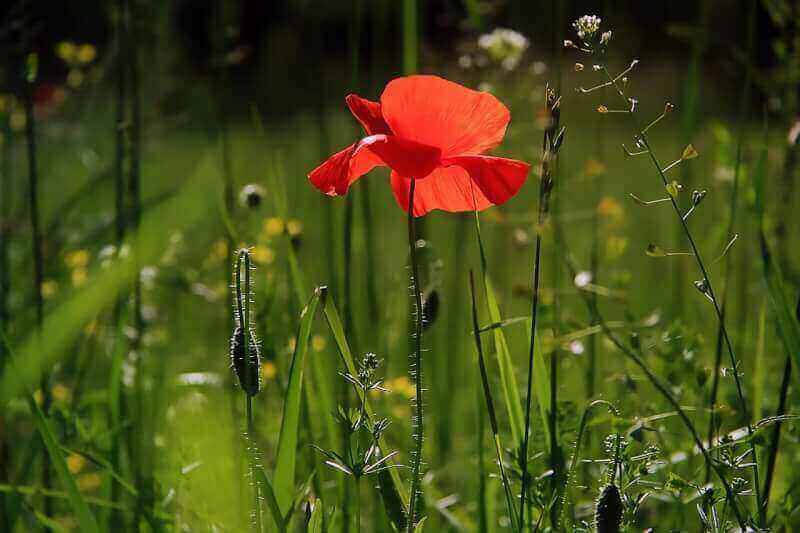👋 Click the mic button to talk to Alfred, the Todd's Seeds Gardening/Sprouting Expert – Feel free to ask him anything!
Ask Virtual Todd Anything - Click the Mic
Want to transform your dull, lackluster lawn into a vibrant, healthy oasis? Look no further! In this article, we’ll explore simple yet effective ways to make your lawn greener and healthier. From proper watering techniques to essential lawn care tips, you’ll discover the secret ingredients to achieving a stunning and envy-worthy lawn. So, roll up your sleeves, grab your gardening tools, and let’s get started on reviving your outdoor space into a lush green haven.

Choosing the Right Grass
Choosing the right grass for your lawn is essential to ensure that it stays green and healthy year-round. One of the most important factors to consider when selecting grass is your climate. Different grass species have different climate preferences, so it’s essential to choose one that can thrive in your local weather conditions. For example, warm-season grasses like Bermuda grass and Zoysia grass are well-suited for hot climates, while cool-season grasses like Kentucky bluegrass and tall fescue are better for cooler regions.
Another crucial factor to consider when choosing grass is your lawn’s use. Is your lawn primarily for aesthetic purposes, or will it be subject to heavy foot traffic and play activities? Some grass species are more durable and can withstand heavy use, while others are more delicate and prone to damage. For high-traffic areas, consider grasses like Bermuda grass or buffalo grass, which are known for their resilience.
Understanding your soil is also vital in selecting the right grass. Some grass species thrive in acidic soils, while others prefer alkaline or neutral soils. Test your soil’s pH levels and nutrient content to determine the best grass variety that will flourish in your specific soil conditions.
Proper Mowing Techniques
Maintaining the proper mowing techniques is key to keeping your lawn healthy and vibrant. Adjusting the mower height according to the grass species and the time of year is essential. Different grass varieties have different optimal heights for mowing, so be sure to research and set the mower at the appropriate level. Cutting the grass too short can scalp the lawn and weaken the grass, while leaving it too long can promote thatch buildup and make the lawn more susceptible to disease.
To avoid scalping the lawn, it’s important to never remove more than one-third of the grass blade length in a single mowing session. Following the 1/3 rule ensures that the grass remains at a healthy length, allowing it to maintain strong roots and a dense growth pattern.
Watering Tips
Proper watering is crucial for maintaining a green and healthy lawn. Watering deeply and infrequently is the best approach. This means watering the lawn deeply enough to saturate the soil, encouraging the grass roots to grow deeper. Shallow and frequent watering promotes shallow root growth, leaving the grass more susceptible to stress and drought.
To maximize the effectiveness of watering, it’s recommended to water early in the morning. Watering during the cooler hours of the day minimizes evaporation and allows the grass blades to dry before evening, reducing the risk of disease.
Avoid overwatering, as excessive moisture can lead to fungal diseases and root rot. It’s important to strike a balance and provide the lawn with just the right amount of water it needs to thrive.
Fertilizing the Lawn
Fertilizing your lawn is essential to provide the necessary nutrients for healthy growth. Before fertilizing, it’s crucial to test your soil to determine its nutrient levels and pH. Soil testing kits are readily available and can help you adjust your fertilization approach accordingly.
Choosing the right fertilizer is important to ensure that your lawn gets the nutrients it needs. Look for a balanced fertilizer with the correct ratio of nitrogen, phosphorus, and potassium (N-P-K). The ideal ratio may vary depending on your grass species and regional recommendations, so be sure to consult local gardening resources or professionals.
When applying fertilizer, follow proper techniques to prevent burning the grass or causing environmental harm. Spread the fertilizer evenly, taking care to avoid overlapping areas. Water the lawn after fertilizing to help the nutrients penetrate the soil and reach the grass roots.

Controlling Weeds
Weeds can quickly invade and undermine the health and aesthetic quality of your lawn. Maintaining adequate lawn thickness is one of the most effective ways to prevent weed growth. Dense and healthy grass prevents weeds from taking root by blocking sunlight and competition for resources.
If weeds do appear, pulling them by hand is a safe and environmentally friendly method of control. Be sure to remove the entire plant, including the roots, to prevent regrowth. For larger weed infestations, consider using natural weed control methods, such as vinegar-based herbicides or specialized weed control products labeled for use on lawns.
Managing Lawn Diseases
Lawn diseases can devastate a once-thriving lawn if left untreated. Identifying common lawn diseases is the first step in effectively managing them. Diseases like brown patch, dollar spot, and powdery mildew are prevalent and can be identified by their distinct symptoms, such as discolored patches, powdery growth, or thinning turf.
Improving air circulation is essential in preventing and managing lawn diseases. Prune overhanging branches and thin out dense vegetation to promote airflow within the lawn. This helps to minimize humidity and creates an environment less favorable for disease development.
If disease does occur, it’s important to remove the affected grass promptly. Diseased grass should be carefully cut out and discarded to prevent further spreading. Seeding or sodding the affected areas can help restore a healthy lawn.

Dealing with Lawn Pests
Lawn pests can wreak havoc on your lawn’s health and appearance. Identifying common lawn pests like grubs, chinch bugs, and armyworms is crucial to implementing effective pest control measures. Look for signs of damage, such as irregularly shaped brown patches or chewing marks on the grass blades.
Encouraging beneficial insects is a natural and eco-friendly method of pest control. Ladybugs, lacewings, and certain wasp species are examples of beneficial insects that prey on common lawn pests. Provide habitats and food sources for these insects by planting native flowers, herbs, or creating insect-friendly areas.
For severe pest infestations, targeted pest control methods may be necessary. Use organic or chemical pest control products labeled specifically for lawns. Follow the instructions carefully to ensure proper application and minimize harm to beneficial insects and the environment.
Aerating the Soil
Aerating the soil is an essential step in maintaining a healthy lawn. Determine if your lawn needs aeration by assessing soil compaction levels. If your lawn sees heavy foot traffic, mower use, or feels spongy, it may benefit from aeration.
Choosing the right aeration technique depends on your lawn’s specific needs. Core aerators remove plugs of soil, alleviating compaction and improving water and nutrient penetration. Spike aerators create holes in the soil without removing soil cores and are suitable for less compacted soil.
Following a proper aeration schedule is essential. For cool-season grasses, aerate in the fall, allowing ample time for the grass to recover before winter. Warm-season grasses benefit from aeration in late spring or early summer when they are actively growing.

Overseeding and Renovation
Over time, lawns can become thin, patchy, or dominated by weeds. Overseeding and renovation methods can rejuvenate a tired lawn and promote healthy grass growth. Choosing the right time to overseed is crucial. Fall is generally the best season for overseeding, as cooler temperatures and more consistent rainfall provide optimal conditions for seed germination and establishment.
Preparing the lawn for overseeding involves removing excess thatch, mowing the grass to a low height, and raking to expose the soil. This creates favorable conditions for seed-to-soil contact and enhances germination.
Proper overseeding techniques involve evenly spreading the grass seed over the prepared lawn and lightly raking to cover the seeds. Applying a thin layer of straw mulch can also help retain moisture and protect the new grass seedlings.
Maintaining Lawn Edges
Well-maintained lawn edges enhance the overall appearance of your lawn and prevent grass from spreading into undesired areas. Lawn edging tools, such as spades or power edgers, help create neat and defined edges along driveways, walkways, and garden beds.
Regularly trimming lawn edges is essential to prevent grass from overgrowing and encroaching on neighboring areas. This not only keeps your lawn looking clean and well-manicured, but it also reduces the need for excessive trimming and helps maintain a tidy appearance.
To prevent grass from overgrowing, consider using edging materials like plastic or metal strips. These can be inserted into the ground along the lawn edges, creating a barrier that prevents the grass from spreading.
By following these comprehensive lawn care practices, you can make your lawn greener and healthier, creating a beautiful and inviting outdoor space to enjoy year-round. Remember to tailor your lawn care routine to the specific needs of your grass species, climate, and soil conditions for optimal results. With a little effort and attention to detail, you’ll be rewarded with a lush, vibrant lawn that serves as a source of pride and enjoyment. Happy gardening!
